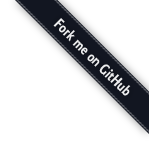Requirements for the DeepL CLI Translation Tool
1. Project Description
The goal is to create a simple and efficient command-line utility that allows users to translate text using the DeepL API. The tool will be configurable and easy to use for quick translations from the terminal.
2. Features
2.1 Core Features
- Text Translation: Translate a piece of text provided as an argument.
- Automatic Source Language Detection: If the source language is not specified, the tool will attempt to detect it automatically.
- Flexible Configuration: The DeepL API key, as well as default source and target languages, must be configurable via a dedicated configuration file.
- Result Display: The translated text will be displayed directly in the terminal.
2.2 Optional Features (for future versions)
- File Translation: Ability to translate the content of a file and write the translation to a new file.
- Glossary Support: Use DeepL glossaries for specific translations.
- Interactive Mode: A mode where the user can type text line by line for translation.
- Display Supported Languages: A command to list all languages supported by DeepL.
3. Technical Specifications
3.1 Development Language
- The project will be entirely coded in Go (Golang).
3.2 Command-Line Usage
- The final executable must be usable via the
deepl command.
- Usage examples:
deepl "Hello world" (translates to default target language)deepl -s fr -t en "Bonjour le monde" (translates from French to English)
3.3 Configuration File
- A configuration file named
.deepl.toml (or another format like YAML/JSON if preferred, but TOML is common for Go) will be created in the ~/.deepl/ directory (or $HOME/.deepl/ on Linux/macOS, %USERPROFILE%\.deepl\ on Windows).
- This file will contain at minimum:
api_key: The DeepL API key.source_lang: The default source language (optional, can be auto-detected).target_lang: The default target language (mandatory).
3.4 DeepL API
- Use of the DeepL REST API. A Go library for the DeepL API could be used if available and maintained, otherwise direct HTTP requests will need to be implemented.
- The DeepL API Free plan will be used for development and testing.
4. Implementation Steps
4.1 Phase 1: Initialization and Configuration
- Go Project Initialization: Create a new Go module.
- Directory Structure: Set up the basic project structure (see section 7).
- Configuration Management:
- Implement logic to read the
~/.deepl/.deepl.toml file.
- Handle errors if the file or API key is missing.
- Use a configuration parsing library (e.g.,
viper, gopkg.in/toml.v2).
4.2 Phase 2: Translation Logic
- CLI Argument Parsing:
- Use a library like
cobra or flag to manage command-line arguments (-s, -t, text to translate).
- Prioritize CLI arguments over default values from the configuration file.
- DeepL API Call:
- Implement logic to construct the HTTP request to the DeepL API.
- Handle API responses (success, errors, HTTP codes).
- Display the translation or error messages clearly.
4.3 Phase 3: Build and Distribution
- Compilation Script: Prepare a script (or Makefile target) to compile the executable for different platforms (Linux, macOS, Windows).
- GitHub Actions for Releases:
- Set up a GitHub Actions workflow to compile the tool for different architectures and operating systems.
- This workflow should create GitHub releases with attached binaries upon a tag push.
4.4 Phase 4: Documentation and Tests
- Unit and Integration Tests: Write tests for key components (configuration parsing, API calls, etc.).
- Documentation:
- Create a detailed
README.md file.
- Create more in-depth documentation in the
doc/ directory.
